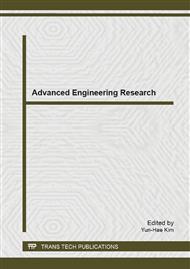p.171
p.176
p.183
p.189
p.193
p.198
p.205
p.209
p.214
The Analysis on the Tribological Properties of TPU/PVC Blends with Chrome-Plated Steel under Dry Sliding
Abstract:
It is based on actual working conditions and parameters of the hydraulic steering gear, to reach the purpose of the optimizing rubber by different rubbers mixing technology. Comparison the five kinds rubber and metal of the friction characteristics in dynamic fit, obtained a performance excellent rubber in the specific operating conditions. Then improve the overall service life of the transportation equipment. It is first prepared the same hardness TPU and PVC and blends that is ratio of 2:8, 5:5and8:2 in this article. The pros and cons of the five rubbers are analyzed by friction and wear properties of the above experimental. The test curve of coefficient friction and wear with time has been done under different load at constant low speed, friction and wear and wear mechanism of five rubbers with chrome-plated steel comparatively analyses to determine TPU/PVC = 8:2 blends has the heat resistance and wear resistance are better than TPU and PVC under dry sliding conditions.
Info:
Periodical:
Pages:
193-197
Citation:
Online since:
April 2014
Authors:
Keywords:
Price:
Сopyright:
© 2014 Trans Tech Publications Ltd. All Rights Reserved
Share:
Citation:


